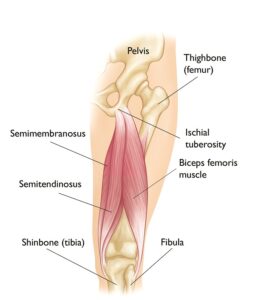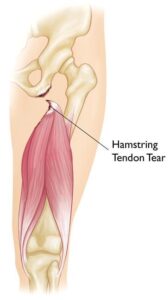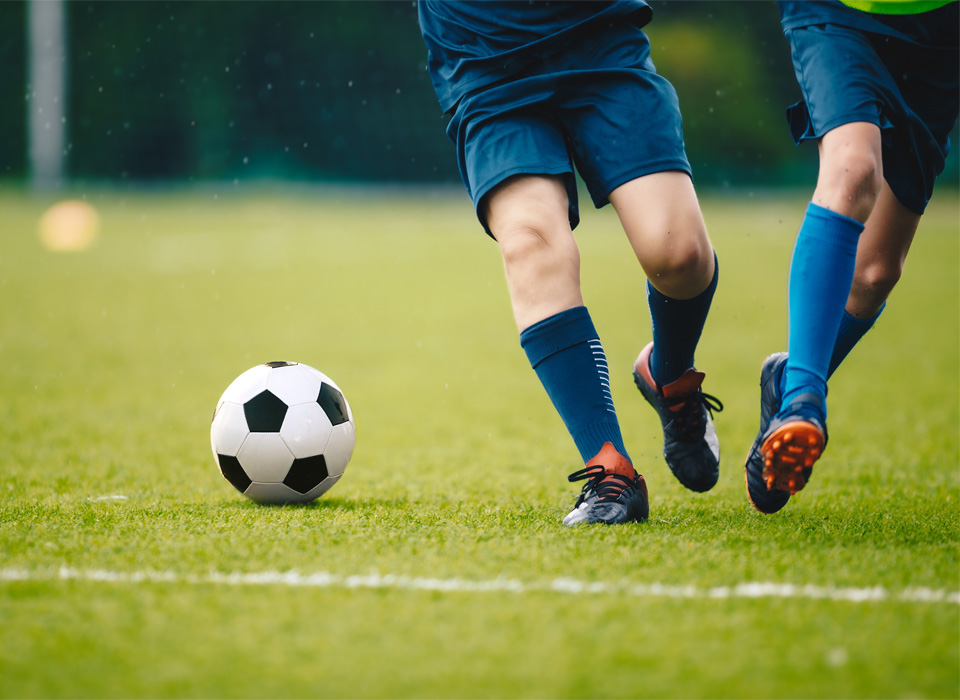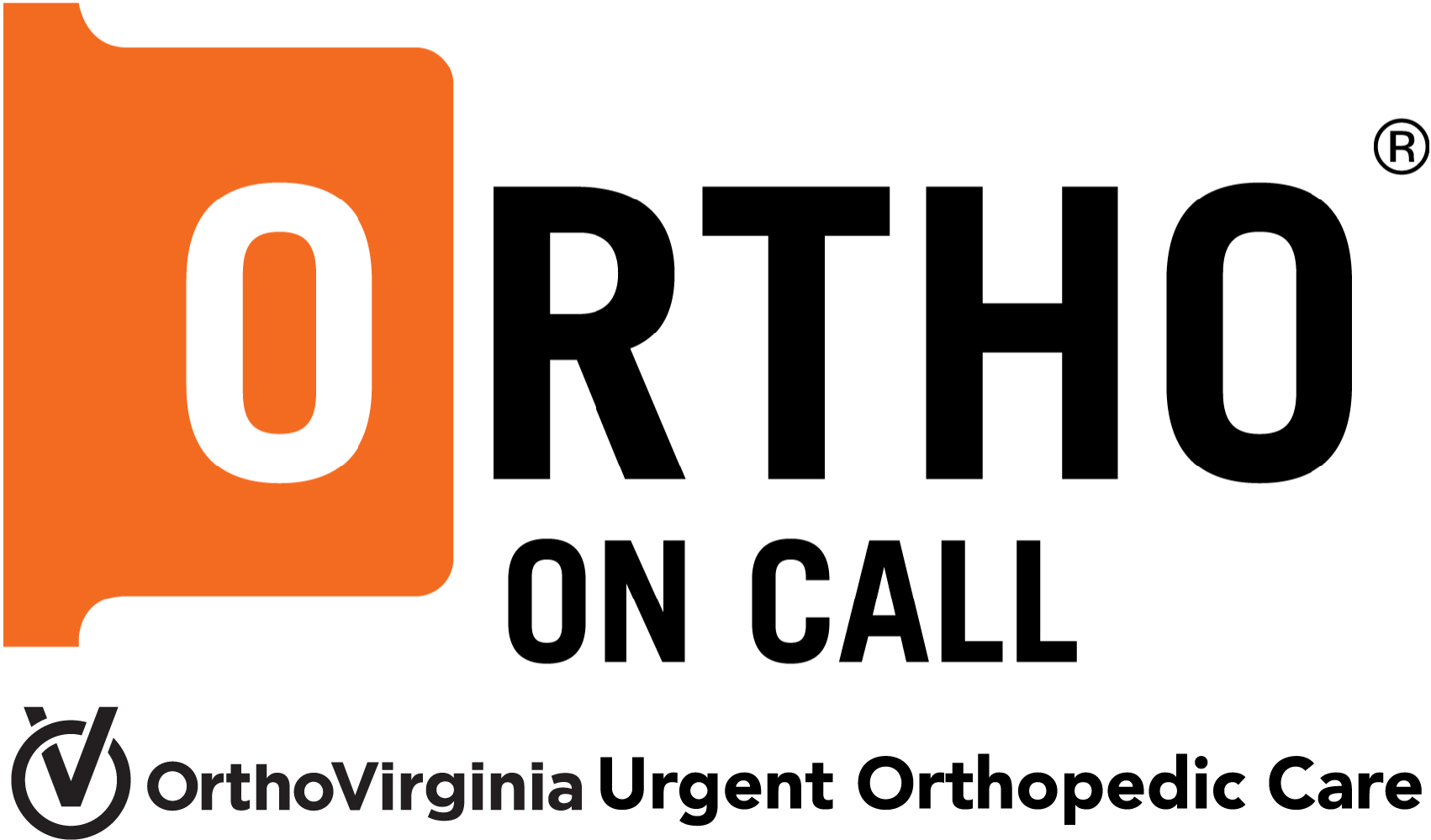Welcome back to my blog! I’m Larry Benson, MD, CAQSM, from Ortho On Call and OrthoVirginia. Let’s keep discussing common soccer injuries. Today, we’re going to delve into the ins and outs of strained muscles.
What is a muscle strain?
When an athlete gets a muscle strain, they have injured a muscle and/or tendon. A tendon is fibrous cords of tissue that attach your muscles to bone. The most common strains occur in the back or leg.
Much like a sprain, a strain can be:
- A noncomplex stretch or pull of the muscle or tendon.
- A partial or complete tear of the muscle or tendon.
Soccer and other contact sports, like hockey and football, put athletes at risk for hamstring strains.


Source: Hamstring Muscle Injuries – OrthoInfo – AAOS
How does a muscle become strained?
There are several ways a muscle can strain:
- Muscle tightness. Always be sure you’re following a daily stretching routine to keep your muscles less vulnerable to strain.
- Muscle imbalance. This happens when one muscle group is stronger than another. Ex.: Your quadriceps are typically more powerful than the hamstrings, making your hamstrings become fatigued quicker and more susceptible to strain.
- Poor conditioning. Weak muscles are less able to manage the stress of exercise, making them more likely to be injured.
- Muscle fatigue. This reduces the energy-absorbing capabilities of muscle.
- Choice of activity. Muscle strains don’t discriminate, but athletes, runners, and dancers are especially at risk.
Did you know? Adolescents are more likely to suffer from hamstring strains because bones and muscles do not grow at the same rate. Children’s bones typically grow faster than the muscles, especially during a growth spurt, making the growing bone pull the muscle tight.
Symptoms of a strained muscle
- Sharp pain in the back of your thigh during a full-stride sprint.
- Swelling during the first few hours of injury.
- Bruising on the back of your leg below the knee.
- Weakness that can persist for weeks.
Diagnosis
If you experience sudden pain in the back of your thigh while exercising, you should see a doctor. During your examination, your doctor will ask about how your injury occurred and check for tenderness or bruising. They will press the injured area to check for pain, weakness, swelling, or something more severe.
An imaging test may be performed to determine your diagnosis. These include:
- X-rays, which can show your doctor if you have tendon breakage or tearing.
- MRIs, which create better images of soft tissues and help your doctor determine the degree of injury.
Treatment
Treatment of strains varies depending on the type of injury you sustained, its severity, and your own needs. The main goal of treatment is to get you back on the field and playing the game. Ortho On Call is available for walk-ins, and your doctor will give you a treatment plan intended to get out back out there as quickly and safely as possible.
Nonsurgical treatment
Most strains heal will simple, nonsurgical treatments:
- RICE—Rest, Ice, Compression, and Elevation—is effective for many sports injuries.
- Immobilization. It may be recommended to wear a splint for a short period of time to keep your muscle in a neutral position while it heals.
- Physical Therapy. Following the initial pain and swelling, physical therapy may be used to restore strength and range of motion.
Surgical treatment
Surgery may be recommended for tendon avulsion injuries, meaning the tendon has pulled completely away from the bone.
Surgery will require:
- A procedure in which the surgeon will pull the tendon back into place, remove scar tissue, then reattach the tendon to the bone.
- Rehabilitation will begin after surgery. You will be instructed to keep weight off the injured muscle to protect the repair by using crutches for a period determined by your doctor.
- A physical therapy program will follow with simple stretches intended to improve flexibility and range of motion. Strengthening exercises will be added in gradually.
Recovery
Most muscles will return to full functioning after a completed rehabilitation program. It is important to seek early treatment, including RICE protocol and physical therapy, for a quick and successful return to the field. Be sure to get the green light from your doctor before you jump back into a soccer game—restraining a muscle increases the risk of permanent damage and a chronic condition.
If you experience an injury during your game, Ortho On Call is available for quick examination and treatment.

